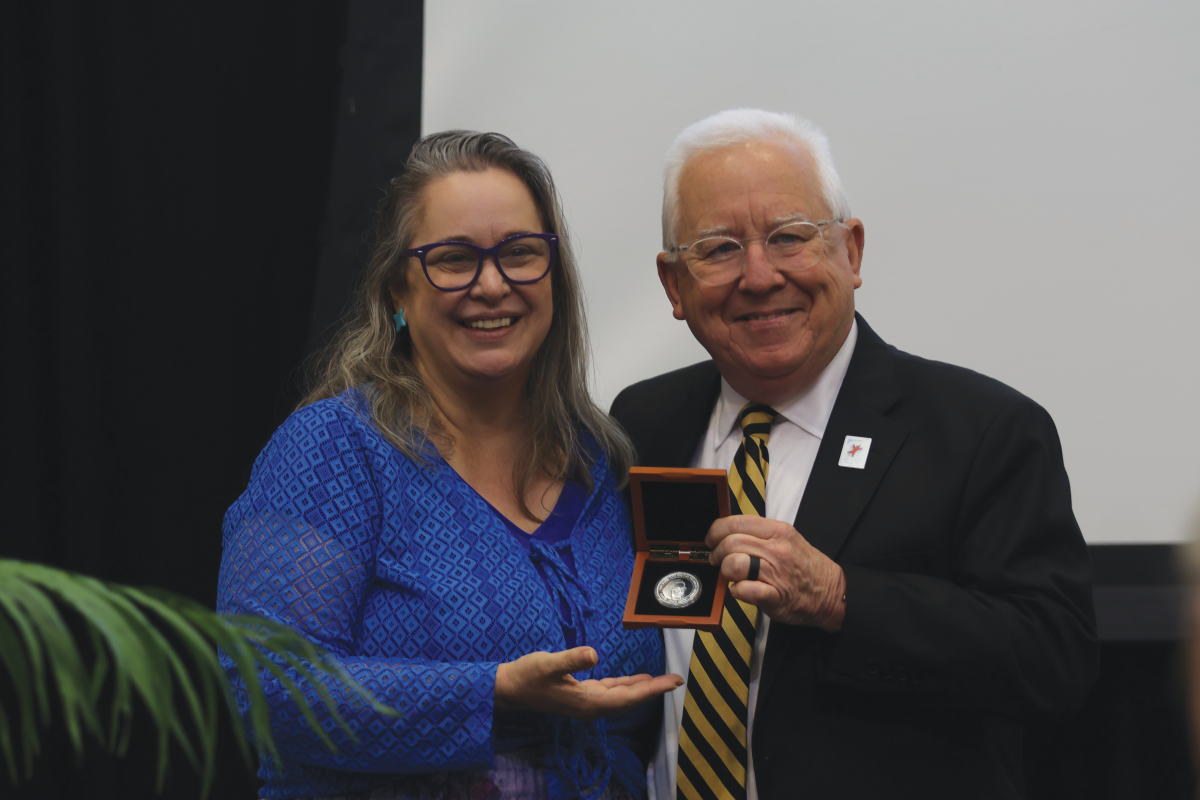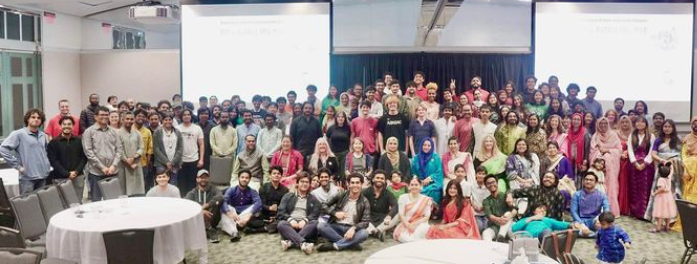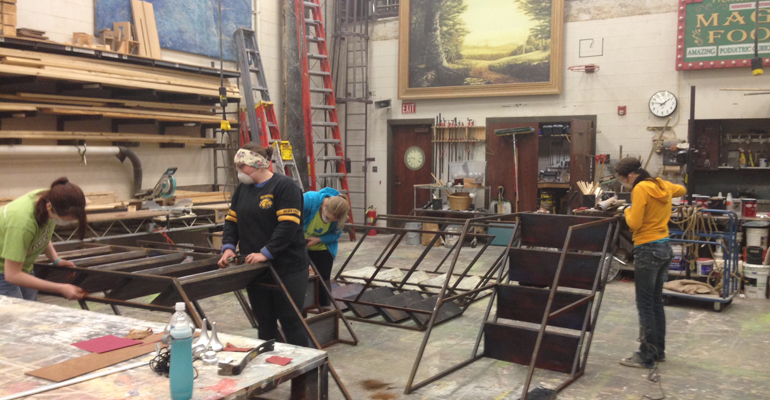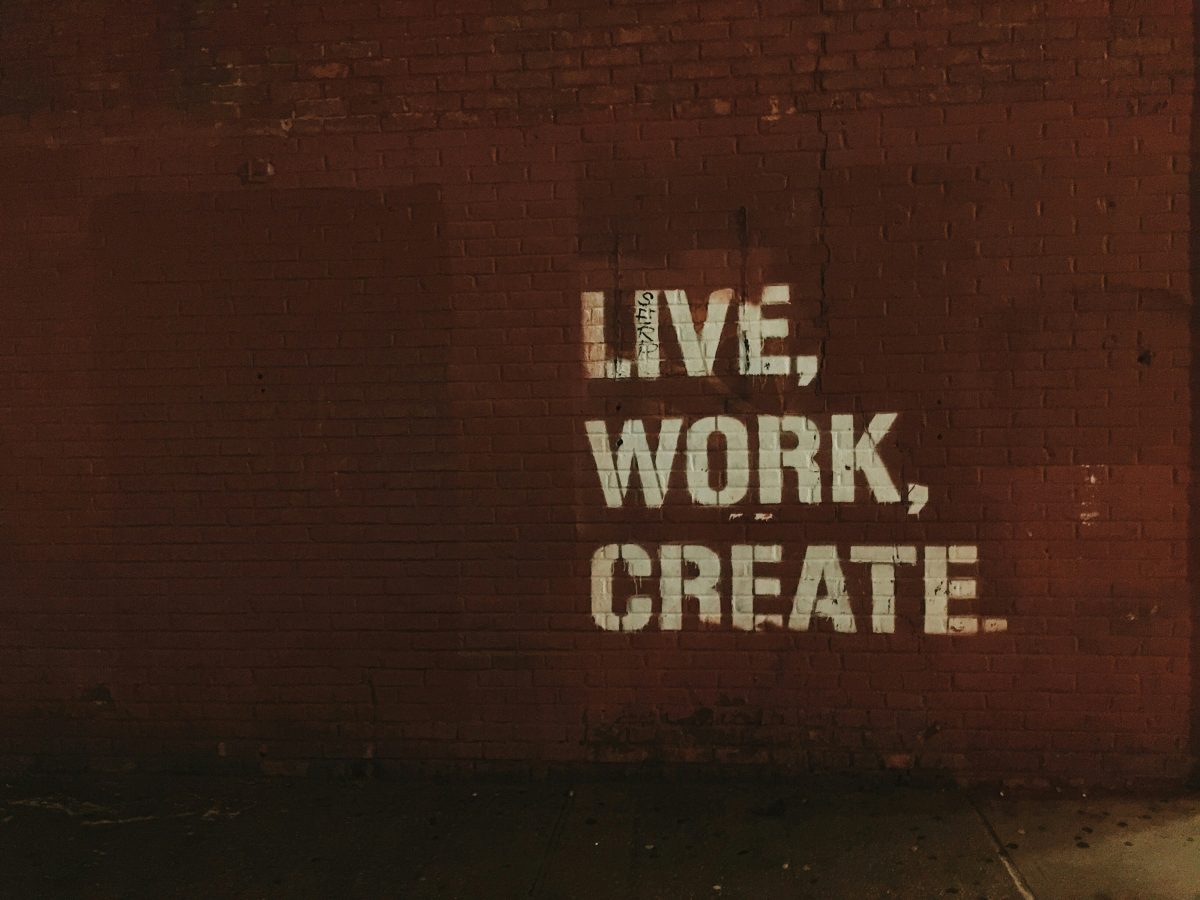Taylor Russell, Amanda Boe and Ashley Fitzgerald sand and grind a set of steel stairs to be mounted for the studio production of “Machina,” which opens March 26.
STEM stands for Science, Technology, Engineering and Mathematics; the acronym is commonly used to refer to highly technical fields. It is also thought to be a stereotypically male category of work.
However, in the Department of Theatre at The University of Southern Mississippi, there are several female technicians ready to work as equals to their male counterparts. Working in the scene shop, these women regularly use STEM knowledge to do carpentry, welding, electrical lighting and other skills needed to create the sets for the many productions performed by the department.
A common theme among many women in shop was an early introduction into theater, as well as a love for creating.
“When I took scene design, I really got to use the creative side of my brain and the logical side of my brain, and that satisfied all of what my brain wanted to do,” said Lacey Lites, first-year graduate student in scenic design for theater and graduate assistant in the scene shop.
However, another common theme found among these women was the need to combat stereotypes. Bronwyn Teague, a first-year graduate student in light and sound design, mentioned the “funny looks” people give her when she mentioned her job, and Lites mentioned the tendency of people to question her capabilities because of her gender.
“No matter how good you are, people will always doubt your abilities,” Lites said. “It’s harder to get a job in this field.”
“Being a female in this specific program, it’s kind of frustrating to know that you’re constantly kind of trying to prove that you can do the work,” said Kensey Coleman, a senior theatrical design and technology major with a focus on scenery and the assistant scene designer for the upcoming production, “Machinal.”
Teague, Coleman and Lites all agreed bias against women is beginning to vanish, especially as more people are made aware of the problem; however, it is still problem because there are fewer women than men in the field.
“It’s difficult to kind of stay motivated when you aren’t seeing a lot of the women doing the heavy work,” Coleman said.
“We need more visibility when it comes to the work female engineers have already accomplished, so young girls know it’s not just men who are behind technology they use in their everyday lives,” said Heather Huhman in a 2012 Forbes article.
The three students agreed the best way to combat stereotypes and bias is to ignore it while working hard. Confidence in doing the job well was the main advice all three women had to offer.
“Don’t be afraid to do it. If that’s what you want to do, do it. Try not to listen to the negativity, and do the job the best of your ability, and if you do the job well, they’ll like you regardless,” Teague said.
According to an Forbes article by Heather Huhman, she reported that, “A 2011 report by the U.S. Department of Commerce found only one in seven engineers is female. Additionally, women have seen no employment growth in STEM jobs since 2000.”
The National Girls Collaborative Project, an organization dedicated to instilling an interest in STEM in girls kindergarten through 12th grade, said, “Female scientists and engineers are concentrated in different occupations than are men, with relatively high shares of women in the social sciences (58 percent) and biological and medical sciences (48 percent) and relatively low shares in engineering (13 percent) and computer and mathematical sciences (25 percent).”




































